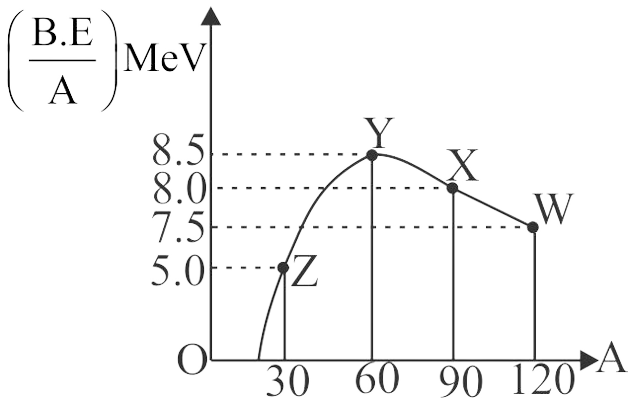363695 The binding energy of deutron \(_1^2{\text{H}}\) is \(1.112\,MeV\) per nucleon and an \(\alpha \)-particle \({}_2^4He\) has a binding energy of \(7.047\,MeV\) per nucleon. Then in the fusion reaction \(_1^2{\text{H}} + _1^2{\text{H}} \to _2^4{\text{He}} + Q,\) the energy \(Q\) released is
363695 The binding energy of deutron \(_1^2{\text{H}}\) is \(1.112\,MeV\) per nucleon and an \(\alpha \)-particle \({}_2^4He\) has a binding energy of \(7.047\,MeV\) per nucleon. Then in the fusion reaction \(_1^2{\text{H}} + _1^2{\text{H}} \to _2^4{\text{He}} + Q,\) the energy \(Q\) released is
363695 The binding energy of deutron \(_1^2{\text{H}}\) is \(1.112\,MeV\) per nucleon and an \(\alpha \)-particle \({}_2^4He\) has a binding energy of \(7.047\,MeV\) per nucleon. Then in the fusion reaction \(_1^2{\text{H}} + _1^2{\text{H}} \to _2^4{\text{He}} + Q,\) the energy \(Q\) released is
363695 The binding energy of deutron \(_1^2{\text{H}}\) is \(1.112\,MeV\) per nucleon and an \(\alpha \)-particle \({}_2^4He\) has a binding energy of \(7.047\,MeV\) per nucleon. Then in the fusion reaction \(_1^2{\text{H}} + _1^2{\text{H}} \to _2^4{\text{He}} + Q,\) the energy \(Q\) released is
363695 The binding energy of deutron \(_1^2{\text{H}}\) is \(1.112\,MeV\) per nucleon and an \(\alpha \)-particle \({}_2^4He\) has a binding energy of \(7.047\,MeV\) per nucleon. Then in the fusion reaction \(_1^2{\text{H}} + _1^2{\text{H}} \to _2^4{\text{He}} + Q,\) the energy \(Q\) released is

